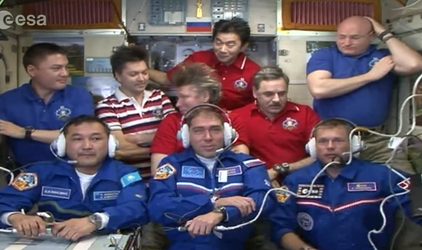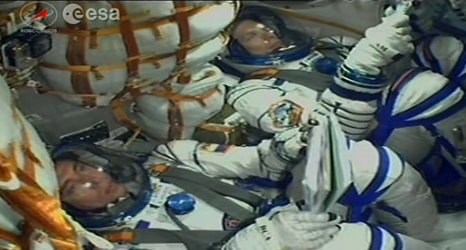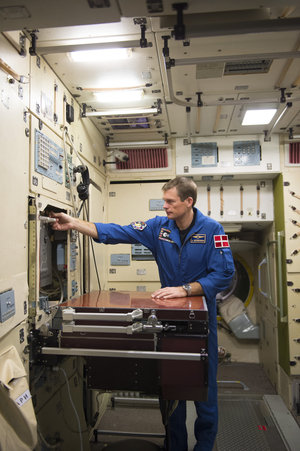Skin and muscle
Astronauts have been known to grow by up to 7 cm as their spines lengthen in weightlessness. As a result, many suffer from backache during their missions. ESA astronaut Andreas Mogensen was the first to evaluate in space a new suit designed to combat the lack of gravity effects by squeezing the body from the shoulders to the feet with a similar force to that felt on Earth.
Each Skinsuit is tailor-made for its wearer with a bidirectional weave. The suits need to fit tightly but comfortable, while creating the right amount of force in the right places.
ESA’s Space Medicine Office is working with the universities of Kings College and University College in London, England, and the Massachusetts Institute of Technology, USA, to test the suit prototypes.


Access the video
Andreas was the first astronaut to collect data on his muscles using ESA’s Muscle Atrophy Research and Exercise System, or MARES for short. The complex machine is a three-in-one muscle-measurement machine on the International Space Station that monitors astronauts’ muscles as they work out.
Muscle strength decreases during spaceflight and researchers need to know why this happens in order to prepare for long-duration missions and safe space tourism. MARES is an exercise bench that offers detailed information about how muscles behave during spaceflight.
Looking at muscle contraction at a single moment gives little information but MARES provides a full overview of muscle speed and force as an elbow or knee joint bends.
Unfortunately for Andreas and the next astronauts to use the equipment, MARES provides small electrical shocks to the muscles to better chart their strength. All in the name of science.


Access the video














 Germany
Germany
 Austria
Austria
 Belgium
Belgium
 Denmark
Denmark
 Spain
Spain
 Estonia
Estonia
 Finland
Finland
 France
France
 Greece
Greece
 Hungary
Hungary
 Ireland
Ireland
 Italy
Italy
 Luxembourg
Luxembourg
 Norway
Norway
 The Netherlands
The Netherlands
 Poland
Poland
 Portugal
Portugal
 Czechia
Czechia
 Romania
Romania
 United Kingdom
United Kingdom
 Slovenia
Slovenia
 Sweden
Sweden
 Switzerland
Switzerland











































